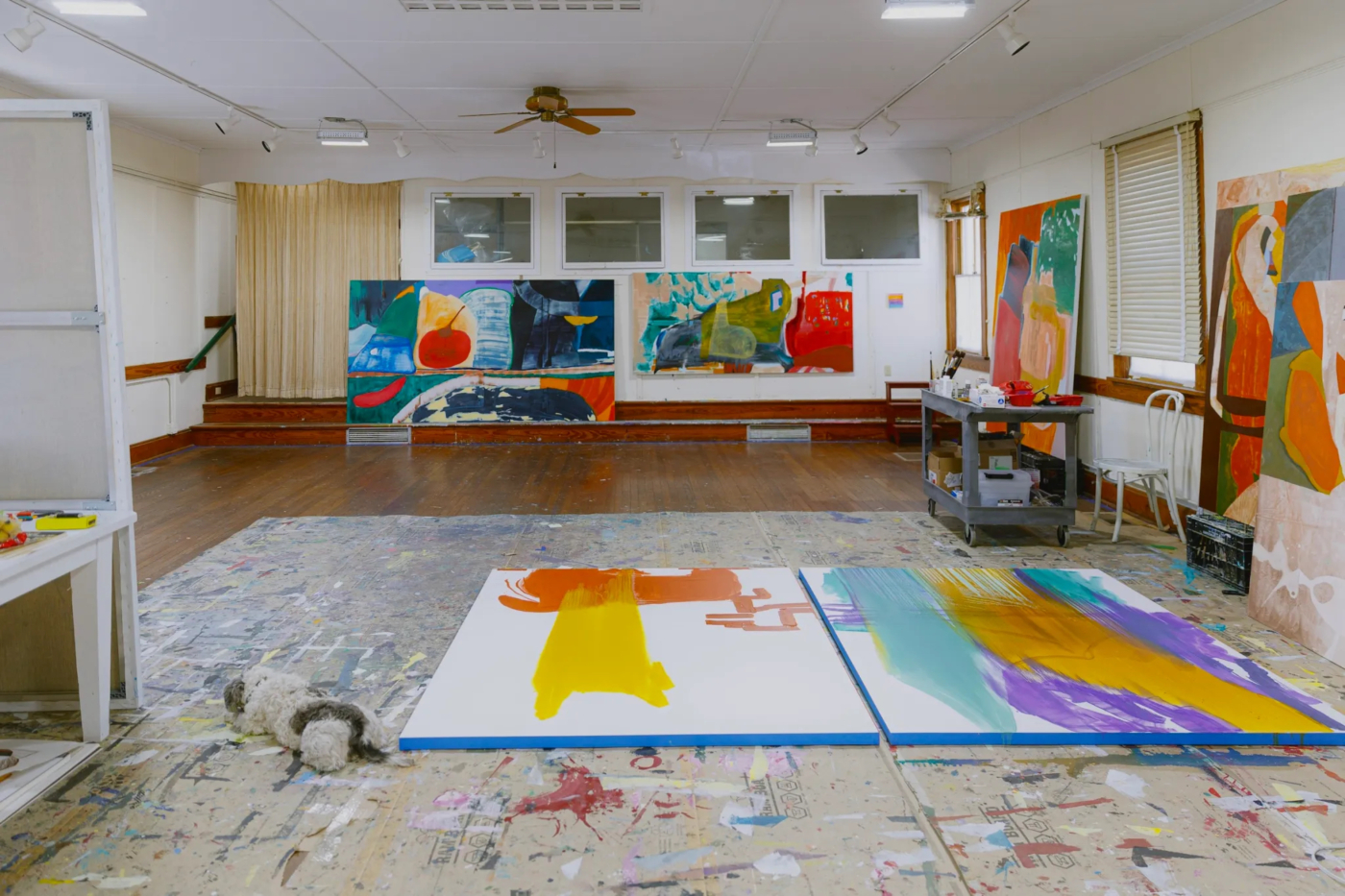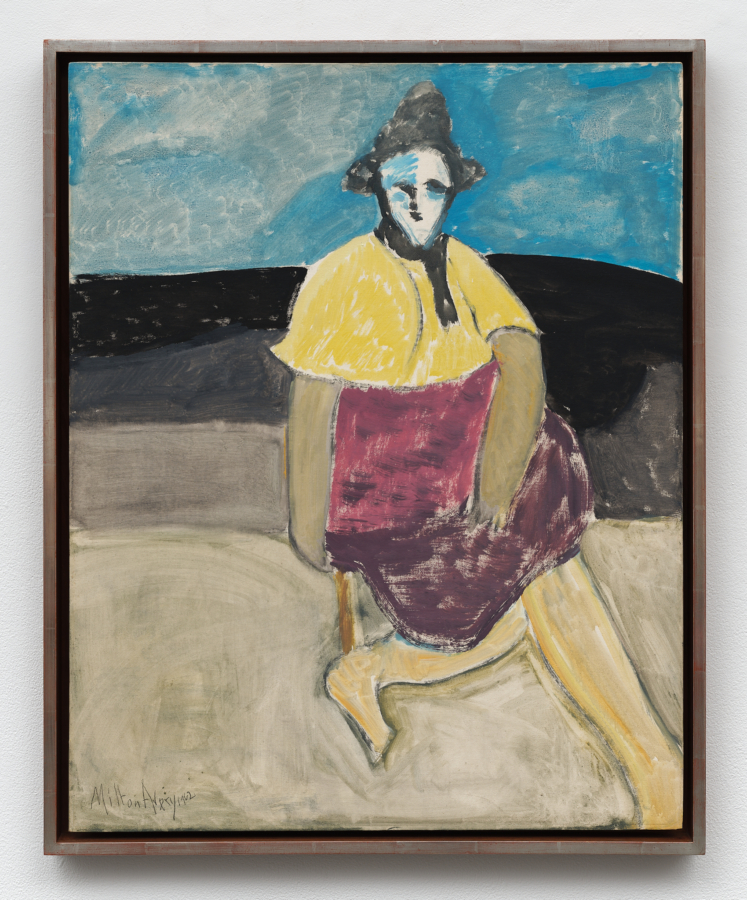
May 1, 2025
Download as PDF
View on Hyperallergic
How long have you been working in this space?
Three months.
Describe an average day in your studio.
An average day in the studio starts in the late afternoon. I’m not really a morning person, and I need a good amount of time after waking up before I can be productive. When I arrive at the studio, I usually sit for a while, look at the canvases, and gradually ease into the work. Once I decide to start, I just begin. I often listen to music, podcasts, work in silence, or even talk on the phone with friends; weirdly it helps distance me from the constant stream of thoughts racing through my mind, which ultimately benefits the work. I see painting as a meditative state, and creating that mental distance helps me enter it more fully.
How does the space affect your work?
I’m not exactly sure how it affects the work, but I do know that space has a big impact. That’s why, even though I love my original studio, I’m very open to traveling and painting in different spaces. I spent the last three months on Long Island, working in Amy Sillman’s studio. It was definitely challenging at first, but in the end, I feel it helped me break through — at least that’s how I see it.
How do you interact with the environment outside your studio?
I’m influenced by everything I interact with, especially architecture, textures, the colors of the city I’m in, the energy, and the history of a place. These things settle in quietly, like dust, whether or not I’m aware of it.
What do you love about your studio?
What struck me about this particular studio was its coziness — it’s not a typical studio space. It has a character of its own. You don’t just walk in and take it over … you have to mold yourself to it, blend with it. It asks something specific of you. You become part of the studio’s rhythm, and in that negotiation, something shifts in the work.
What do you wish were different?
At first, I wished for white walls, something familiar. That’s usually how I work: upright, clean, organized. But in this space, the walls wouldn’t allow it. So I painted on the floor, leaned canvases against the walls and in the end, I loved it. I wouldn’t change a thing. The limitations became part of the language. I could never fully see the paintings clearly — the strong architectural presence of the space always interfered. I had to imagine how they would look on a white wall, which became its own kind of tease.
What is your favorite art material to work with?
Oil paint, always. There is no medium more satisfying or mysterious to me.



